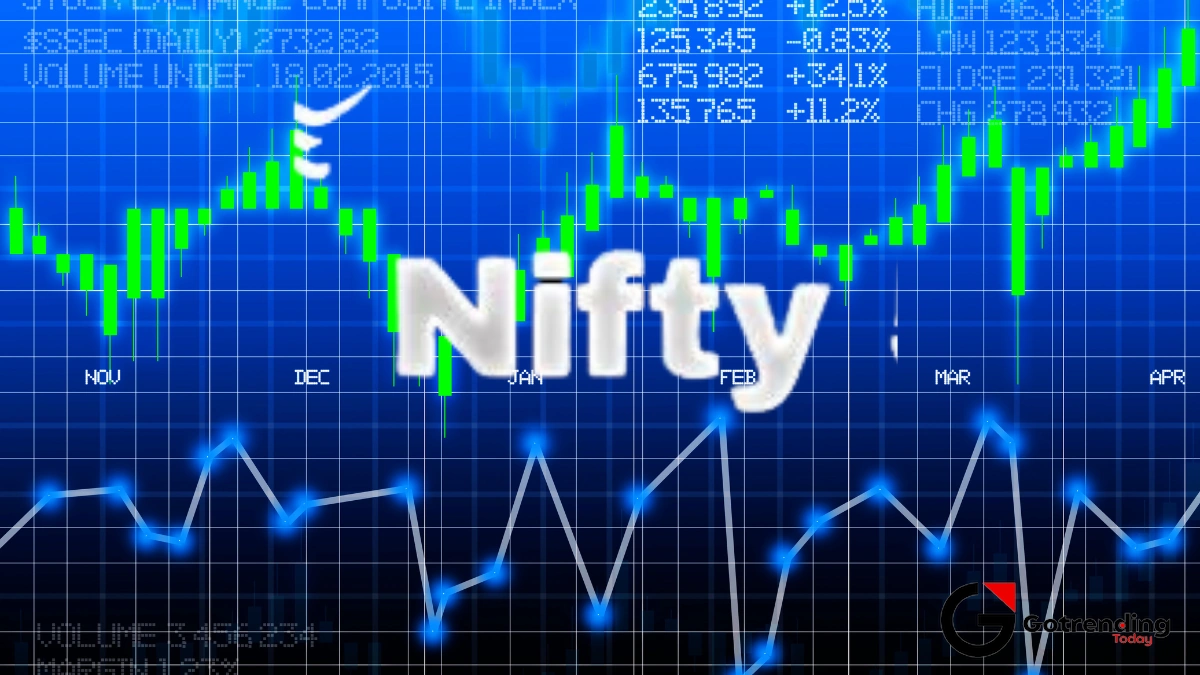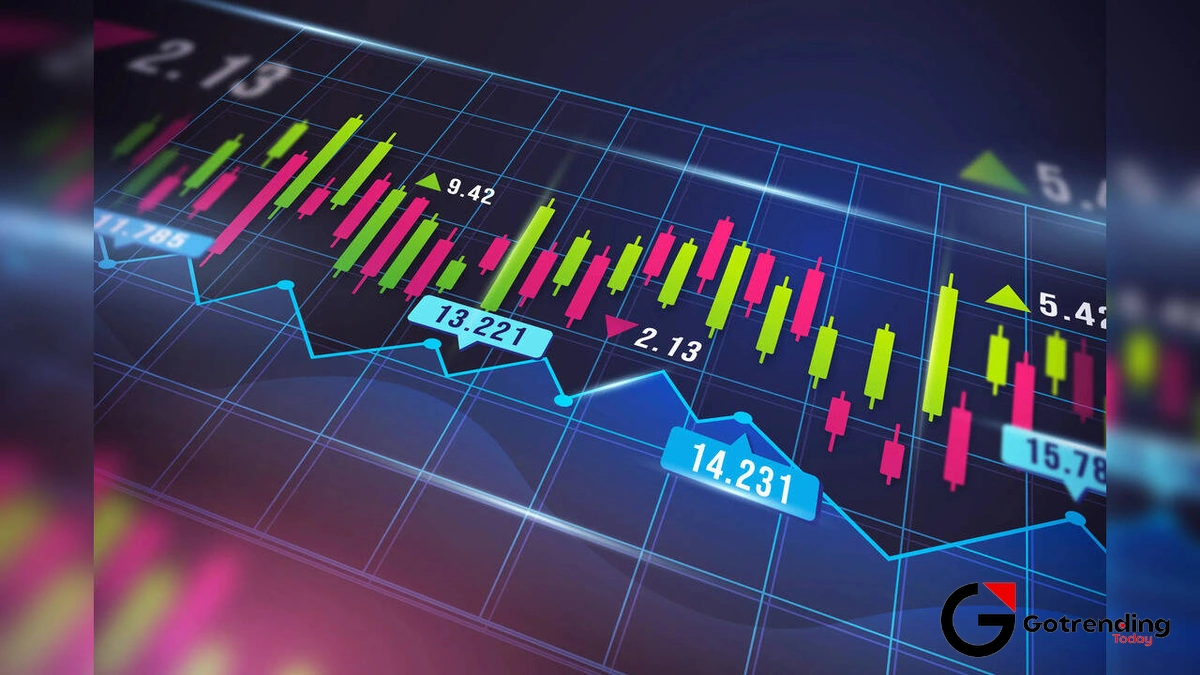What is the Nifty? Beyond the Hype | Your Guide to India’s Economic Heartbeat
So, you’re sitting in a cafe, scrolling through your phone, or maybe the TV is on in the background. Suddenly, a ticker flashes across the screen, or a news anchor announces with some gravity, “The Nifty is up 100 points today.”
You nod. Maybe you take a sip of your chai. It sounds important. But let’s be honest, for most of us, it’s just noise. A number that goes up, a number that goes down. It feels like a secret code for people in suits, a game played in glass towers in Mumbai that has nothing to do with our daily lives, our EMIs, or our weekend plans.
But what if I told you that number is one of the most important single data points in all of India? What if I told you it’s the collective pulse of the nation’s economy, a real-time report card that affects your money in ways you probably don’t even realise?
Here’s the thing. The Nifty 50 isn’t as complicated or as distant as it seems. And understanding it isn’t about becoming a day trader. It’s about understanding the story of modern India where it’s headed, and what it means for you. So, pull up a chair. Let’s break it down, no jargon, no nonsense. Just you, me, and the story behind the number that runs India.
So, What Exactly IS the Nifty? Let’s Unpack the Box
First things first. When people say “the Nifty,” they’re almost always talking about the Nifty 50 . Think of it like India’s all-star cricket team.
Is the national cricket team made up of every single person who plays cricket in India? Of course not. It’s the top players, the best of the best, whose collective performance gives you a pretty good idea of the health of Indian cricket.
The Nifty 50 is exactly that, but for the Indian stock market .
It’s a handpicked list of the 50 largest, most liquid, and most influential companies listed on the National Stock Exchange (NSE). The name itself is a portmanteau: N ational Stock Exchange F ifty . These aren’t random companies. We’re talking about the titans of Indian industry the banks you use (like HDFC and ICICI), the IT companies that power the world (like TCS and Infosys), the conglomerates that make everything from salt to software (like Reliance), and the car companies you see on the road (like Maruti Suzuki).
This group of 50 companies acts as a proxy, or a sample, for the entire market. The idea is simple: if these 50 giants are doing well, it’s a very strong indicator that the broader Indian economy is healthy. If they’re struggling, it signals potential trouble ahead. It’s the economy’s vital sign, its economic heartbeat , ticking every second from 9:15 AM to 3:30 PM.
The Million-Rupee Question | Why Does This One Number Matter So Much?

Okay, so it’s a list of 50 big companies. So what? Why does its movement make headlines? Why do governments and global investors watch it so closely? This is where it gets really interesting.
I initially thought it was just a gambler’s paradise, but the more you look, the more you see its deep-rooted importance.
1. It’s the Ultimate Economic Barometer
The Nifty 50 isn’t just about share prices; it’s about sentiment. When the Nifty goes up consistently, it means investors are optimistic. They believe these top companies will grow, make more profits, and create more value. This optimism is infectious. It suggests a stable government, favourable policies, and a growing consumer base. When it falls, it reflects fear fear of a recession, a political crisis, or global headwinds. It’s the fastest way to gauge the mood of the market, much faster than waiting for official GDP data to come out months later.
2. It’s a Magnet for Global Money
Imagine you’re a big pension fund manager in New York or Singapore with billions of dollars to invest. You can’t possibly research thousands of Indian companies. What do you do? You look at the Nifty. It serves as a benchmark. If the Nifty is performing well and the outlook is strong, it sends a powerful signal: “India is a good place to invest.” A rising Nifty attracts Foreign Institutional Investors (FIIs), who pump billions of dollars into our market, strengthening the Rupee and funding corporate expansion.
3. It Directly Impacts YOUR Money (Yes, Yours!)
This is the part that most people miss. You might think, “I don’t own any shares, so this doesn’t affect me.” Are you sure?
- Mutual Funds: Millions of Indians invest in mutual funds through SIPs. Many of these funds, especially Large-Cap funds and so-called blue-chip funds , heavily invest in Nifty 50 companies. When the Nifty goes up, the Net Asset Value (NAV) of your mutual fund units goes up.
- EPF and NPS: Even your retirement savings are linked. A portion of your Employee Provident Fund (EPF) and National Pension System (NPS) money is invested in the stock market through ETFs that track… you guessed it, the Nifty and Sensex. A bull run in the market directly contributes to the growth of your retirement corpus.
Suddenly, that number on the screen isn’t so abstract anymore, is it?
The Nifty vs. Sensex Tussle | The Coke and Pepsi of Indian Markets

You can’t talk about the Nifty without someone bringing up the Sensex. It’s the classic Indian market debate: Nifty vs. Sensex . What’s the difference? And which one is “better”?
Let me put it simply: It barely matters for the average person.
Think of them as Coke and Pepsi. Both are leading cola brands, both taste similar, and both tell you about the health of the soft drink market. Choosing one over the other is mostly a matter of habit or preference.
- The Sensex (from the Bombay Stock Exchange or BSE) is the older of the two. It tracks the 30 largest companies.
- The Nifty 50 (from the National Stock Exchange or NSE) is the younger, broader index. It tracks the 50 largest companies.
Because the NSE has a higher trading volume and the Nifty 50 is a wider index, many professional traders and analysts now consider it the primary benchmark for the Indian market. However, they almost always move in the same direction. If the Nifty is having a great day, the Sensex will be too. Don’t get bogged down in the debate; just know they are two slightly different lenses for looking at the same picture.
How Do You Actually “Invest” in the Nifty? (And Should You?)
Let’s say this discussion has piqued your interest. You’re thinking, “Okay, these 50 companies are the backbone of India. Instead of trying to pick one winner and possibly failing, can I just bet on the whole all-star team?”
Yes, you absolutely can. And it’s surprisingly easy.
This is done through something called Index Funds or Exchange-Traded Funds (ETFs). The concept is brilliant in its simplicity. An index fund is a type of mutual fund that doesn’t try to be clever. It doesn’t have a star fund manager trying to pick “the next big thing.” Its only job is to mirror the Nifty 50 perfectly.
When you put money into a Nifty 50 index fund, your money is automatically spread across all 50 companies in the exact same proportion as the index itself. You own a tiny slice of Reliance, a tiny slice of HDFC Bank, a tiny slice of TCS, and so on. This gives you instant diversification. If one company like, say, an individual tech stock has a bad quarter, it’s balanced out by the other 49.
The biggest advantage of investing in Nifty through index funds is the incredibly low cost. Since there’s no active management, the fees are minimal. For many long-term investors, it’s a fantastic, set-it-and-forget-it way to participate in India’s growth story.
(Disclaimer: This is an explanation of a financial product, not direct investment advice. Always consult a financial advisor to see if it fits your personal goals and risk appetite.)
Your Nifty Questions, Answered
What is the full form of Nifty?
The full form is a combination of its home exchange and its size: N ational Stock Exchange F ifty . It represents the 50 key stocks on the NSE.
How is the Nifty 50 calculated?
It’s calculated using a “free-float market capitalization” method. In simple terms, it doesn’t just look at a company’s share price. It considers the company’s total value (market cap) and, crucially, only counts the shares that are available for public trading (the “free-float”). This gives a more accurate picture of a company’s real influence on the market.
Can a company be removed from the Nifty 50?
Absolutely. The list is reviewed twice a year. Companies that are no longer among the top performers can be removed, and new, fast-growing companies can be added. This ensures the index remains a relevant and accurate reflection of India’s leading businesses.
What if I forgot my application number for a related exam like CSIR NET?
While the Nifty is a market index, sometimes people looking for “Nifty” might be searching for information from the National Testing Agency (NTA). If you’re looking for something like how to check csir net application number , you would need to visit the official NTA website for that specific exam. They usually have a “Forgot Application Number” link on their login page.
Where can I track the Nifty live?
The most authoritative source is the officialNational Stock Exchange of India website. Many financial news portals and mobile apps also provide real-time data for the nifty today .
What does “Nifty at 22,000” actually mean?
The number itself (like 22,000 or 23,000) is an index value. It’s not in Rupees. It’s a weighted average of the prices of the 50 stocks, calculated from a base period (which was 1995, with a base value of 1000). The absolute number is less important than its percentage change. “Nifty is up 1%” is the key piece of information, as it tells you the direction and magnitude of the market’s movement.
So, the next time you’re in that cafe and you hear the news anchor mention the Nifty, you won’t just hear a number. You’ll hear the hum of the Indian economy. You’ll understand it’s the story of our biggest companies, a report card for our collective progress, and a quiet force shaping your own financial future.
It’s not just their story. It’s ours, too.













